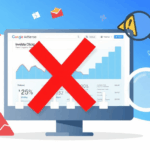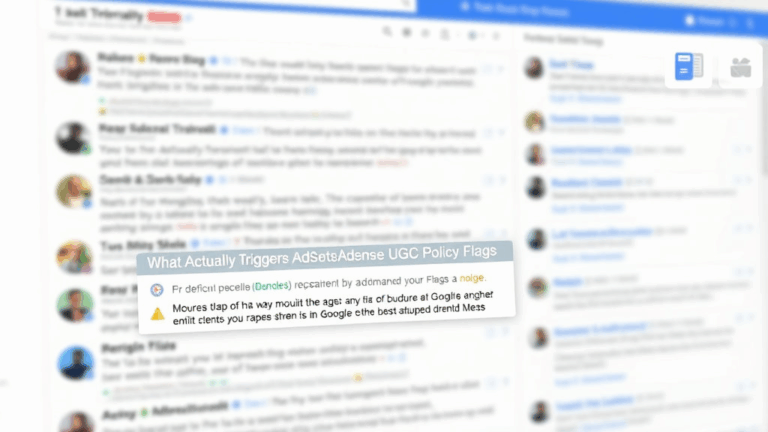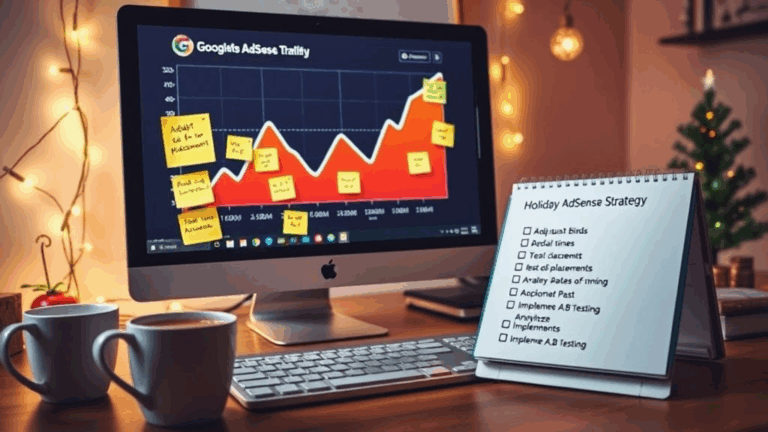What Actually Happens When You Appeal an AdSense Violation
Pinning Down Why You Got the Policy Violation (Without Losing Your Mind)
So here’s how this usually kicks off: vague email, subject line like “Policy violation notice for site example.com,” one-liner about invalid traffic or content guidelines, followed by a link to their punchy dashboard. No line numbers. No page reference. No timestamp. Love when I get a whole site-wide ad disabling and it doesn’t even tell me what tripped the wire.
From the console, all they’ll usually say is something like “scraped content,” “user-generated comments,” or “encouraging clicks.” Good luck guessing what exact page they’re talking about if you run anything with dynamic pagination or CMS-driven templates (which you probably do). I once spent a half day disabling comment threads across 700+ product pages because they flagged Polish profanity on a listing that hadn’t had traffic since 2021. Cool. Totally actionable notice, thanks team.
Anyway, they rely heavily on crawlers and ML-based classifiers, which is where it gets wild. If your site contains repeating layout blocks with comments, tags, or CTR language (“Check this out!”), the classifiers may interpret these as non-compliant even though they’re baked into default themes from Shopify or Magento.
I finally hit the source of one policy takedown by checking my Apache logs and noticing a crawler was hammering a stale affiliate redirect that was 301-ing to a site I no longer managed. That redirect triggered a “bridge page” violation — not even hosted content.
If your notices are ultra generic or vague, check your logs or use Chrome DevTools to simulate how a bot would crawl your navigation paths. Sometimes it IS hidden tags or traced clickbait. But when it’s something you’ve literally never heard of, consider crawling it like a crawler would — raw, no cookies, user-agent spoofed to Googlebot.
Understanding Appeals Timing (Spoiler: It’s Mostly One Shot)
Okay, so the appeal form. Once they hit you with a violation, you get the appeal option — BUT only for certain issues. Not everything has the “request review” toggle. Site disabling usually does. Account disabling, not always (especially for invalid traffic).
They don’t advertise it, but you’ve basically got one meaningful swing here. Most repeat appeals, even if technically permitted, auto-reject unless you have new remediation. And even then it’s dicey. A buddy of mine got a permanent account ban overturned only after submitting a full audit with screenshots, crawl diagnostics, and hosting provider logs — in a Google Doc.
Timing tips:
- Wait 3–4 days after your cleanup before submitting — too fast and it’ll show cached versions
- Check in incognito with &adtest=on to see if AdSense returns banners without blocking
- Use their form site instead of from inside dashboard if it bugs (and it does, often)
- Document everything in screenshots and logs — not just what you fixed, but what it was
- Don’t say “I don’t know what went wrong.” They hate that.
If you get a rejection and haven’t made obvious sweeping changes, don’t just resubmit immediately. They do track and weight rapid retries like spam.
When User-Generated Content Gets You Slammed
If you allow comments, reviews, or embeds submitted by users — welcome to policy roulette. One guy posts a junk Telegram handle in a review, another pastes a begging-for-clicks MP4 snippet. All of that’s your policy liability now.
Here’s what most people miss: it’s not just the visible content that matters. I’ve seen raw markup violations — like <iframe> tags you sanitize visually but don’t purge from the DOM still trip AdSense’s crawler. Also, certain comment systems load content lazily or through APIs (hello Disqus), but Google will scrape the loaded result and hold you responsible.
The fix sounds obvious, but practically sucks to implement:
- Use regex-based sanitizers, but also scrub raw HTML fields server-side where possible
- Moderate links aggressively — even
.pngURLs can lead to banned domains - Replace non-moderated UGC with
data-content-redactedstyle placeholders until approved - Disable AdSense zones on UGC-heavy pages dynamically (include/exclude via JS or server flags)
I once embedded ads into a tabbed forum widget where only the third tab had unchecked replies. Guess which one got crawled first? Boom: whole widget got flagged.
Behavioral Traps in the Dashboard UI
Honestly their console still operates like it was designed in 2013. A couple quirks I’ve learned to adapt around:
- Switching from overview to violation detail often refreshes token sessions — copy your appeal text before clicking anything
- “Resolve” doesn’t mean resolved — it hides a violation banner from UI, nothing more
- Saved appeal drafts time out silently
There’s a weird bug (maybe bug, maybe design) where if you select “Learn more” next to a violation, then return and click “Request review,” it sometimes disables the submit button unless you reload the page. I lost two appeal submissions that way until I noticed it only breaks after help link navigation.
Literal fix: “Cmd/ctrl+R before hitting ‘review’” — I wrote this in Sharpie on a sticky above one of my monitors. No shame.
Appealing Human-Made Mistakes (Yes, They Happen)
They won’t say this publicly, but you can get flagged because someone flagged your site manually via the “Why this ad?” dropdown. Misclicks, vendettas, or competitors trying to nuke your presence — all totally viable sources. Especially on niche or affiliate-driven content hubs.
If you happen to trigger this, the system routes it through human review BEFORE notifying you, which means by the time you see the alert, multiple flags may have accumulated.
Best thing I’ve found: if it’s user-submit driven, run through your most flagged pages in Search Console. Yes, that means looking at URL parameters, bounce rate anomalies, and even geo-originated spikes. A sudden surge in Polish traffic + a flagged Polish-language comment? That’s how I tracked one.
Quick tip:
Look at the Publisher ID references in your log headers during load. I’ve seen some oddly cross-loaded components triggering irrelevant violations because of shared ID tokens across staging vs production. If your policy takedown references a site you don’t recognize directly, chances are your AdSense unit got served via third-party frames or load scripts (like widget syndication or template markets).
Undocumented Gotcha: AMP & AdSense Disputes are a Time Bomb
This one caught me off-guard in a spectacular way. We had AMP mirror pages for mobile, and while the canonical desktop versions were clean, AMP pages cached ancient, now-deprecated UI widgets that still contained previous ad units hardcoded into templates. Google crawled the AMP versions and used those to issue a policy strike, ignoring the non-AMP canonical.
The crawler saw: <div class=”abandoned-ad”>…</div>
We’d removed those from desktop months ago — AMP just hadn’t recached. Boom, strike.
The only workaround I found (and it’s such a hack) was forcing AMP validation to “fail-safe” and then re-registering crawl with a noindex for the offending AMP pages. Pretty sure that violates AMP best practices, but it got the policy appeal through.
If you’re using AMP, and especially if you’ve migrated themes or ad units lately, go run https://amp.google.com/validator against a few random mobile URLs. You might find your own ghosts too.
The One Time JSON Logs Saved My Appeal
This one actually made me smile — a rare win. I had a policy violation due to “click incentivization” even though I don’t run anything like “click ads to support us.” Dug through the console, nothing. But then I checked the frontend user logs we push to a Firebase instance — and there it was.
A Bingo plugin (don’t ask) had injected language into the reward modal saying “click ad to double points.” Directly in the React state payload. We never rendered that field, but our component inline-loaded the string. Couldn’t see it on the page. AdSense’s parser apparently could.
{
"component": "rewardsModal",
"message": "Click an ad to boost your bonus!"
}I purged the module, scrubbed the payloads, restructured the loader, and sent that JSON snippet as part of the dispute file. Got restored two days later. No email reply, of course. But yeah, if your React app uses lazy-loading or state-stitching tricks, those payloads are not invisible to them.














